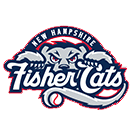Highlights from “What’s Your Organization’s Secret Sauce?
The Role of Marketing & PR In Building Your Brand”
Over 60 PR practitioners registered for Yankee Chapter’s March 13th “lunch and learn” session on the role of marketing and PR in building an organization’s brand. Themes from this excellent panel discussion, facilitated by Clark Dumont, APR, Fellow PRSA, with Gail Winslow, APR, Head of Marketing for Halloran Consulting Group; Sarah Moore, SVP of Marketing for MGM Resorts and Lauren Keane, APR of Communications for SNHU (Southern NH University), include:
Be Clear On Your Goals
“At MGM, we talk about ‘ruthless prioritization,’” says Moore. “We want to make sure we allocate our time and talent to the right things. Silos are born out of misaligned goals and misaligned priorities.”
“We have corporate goals and marketing goals; whatever we do ties directly back to either our vision, our purpose, our 5 competencies or our four core values,” adds Winslow.
The Power of Storytelling Is Real
“Storytelling – sharing the stories of our students — has been the root of our success,” says Keane. SNHU is a university with a global footprint that now has 22,000 students, 2,500 alumni, and 10,000 employees. Keane describes SNHU as a university for those “for whom higher education is not a guarantee.” She told the story of a recent graduate, 63-year-old Robyn Roberts, who is “a grandmother of 33 and completed her degree while driving a truck.” Good Morning America and the other Robin Roberts picked up the story and gave SNHU some national exposure.
Be Strategic
“Marketing without data is just guesses,” says Moore. “Our use of attribution modeling and measurement has skyrocketed. It all depends on what you are trying to do. We’ll go more ‘upper funnel’ to raise awareness about a new restaurant, but if we are trying to fill hotel rooms, we’ll go full lower funnel to drive those bookings. The most important thing to do is get out there and test.”
At Halloran, Winslow’s number one goal is lead generation. “I’m not afraid to leave channels behind,” she says. “We’re not going to get business on Facebook, Twitter or Instagram in our business, so I focus on LinkedIn.”
On PR/Marketing Tools
“We use social media to reach reporters – social media can be your friend,” said Keane. She described a “diploma drop” done on Broadway (one of the cast members from the play ‘Come From Away’ earned their SNHU degree). When the quick-turn video was picked up by the Broadway crowd, reach exploded – “especially after actress Sara Bareilles put it out there”. Keane put a plug in for Muckrack as a media monitoring service offered “at lower cost with great customer service.”
“Content is my number one weapon,” says Winslow. “Know that you can implement low-cost tools. We’re using digital advertising and workflow automation through Hubspot.”
AI: Best Used In Combination With The Human Touch
“We’ve learned what we’re NOT going to do with AI,” says Moore. We’ll use it, but our rule is ‘last touch human.’” Winslow agrees, saying they use AI as a “jumpstarter” but “nothing goes out the door unless it’s been edited by a human (and sometimes, too many humans).” Keane chimes in that she has seen content generated by AI only, humans only and a combination of the two; and often the combination of AI and humans produces the best result – “it is content that is more clear and precise.”
It’s All About Measuring Outcomes
Panelists agreed that while revenue is a mark of success, there are behavior-based metrics – like the number of hotel reservations, and the number of contacts with an organization – and more surface metrics like press coverage, hits to the website, and social media “likes”. We know from PRSA’s Barcelona Principles that the PR field is moving toward more outcomes vs. output measurement.

















